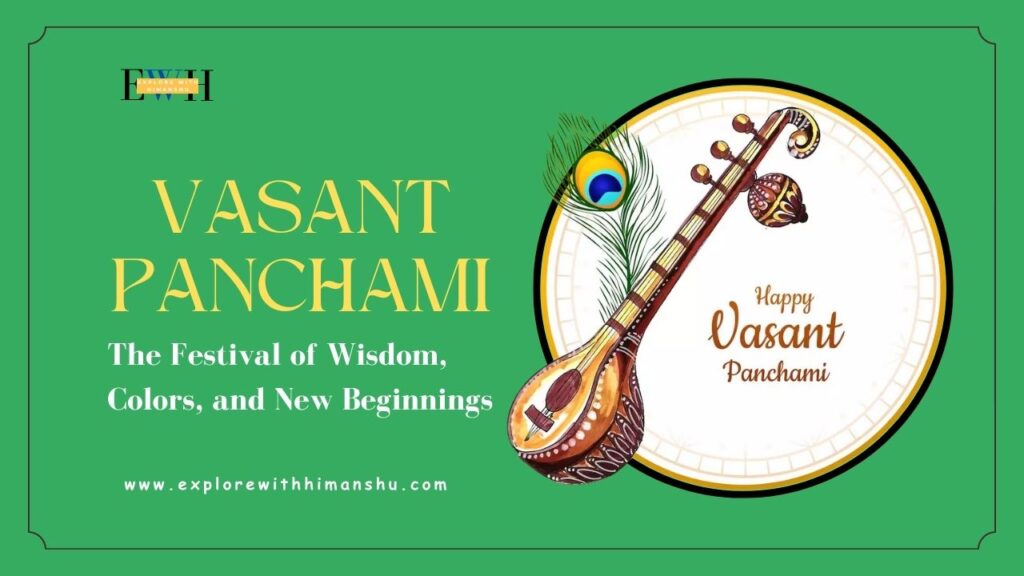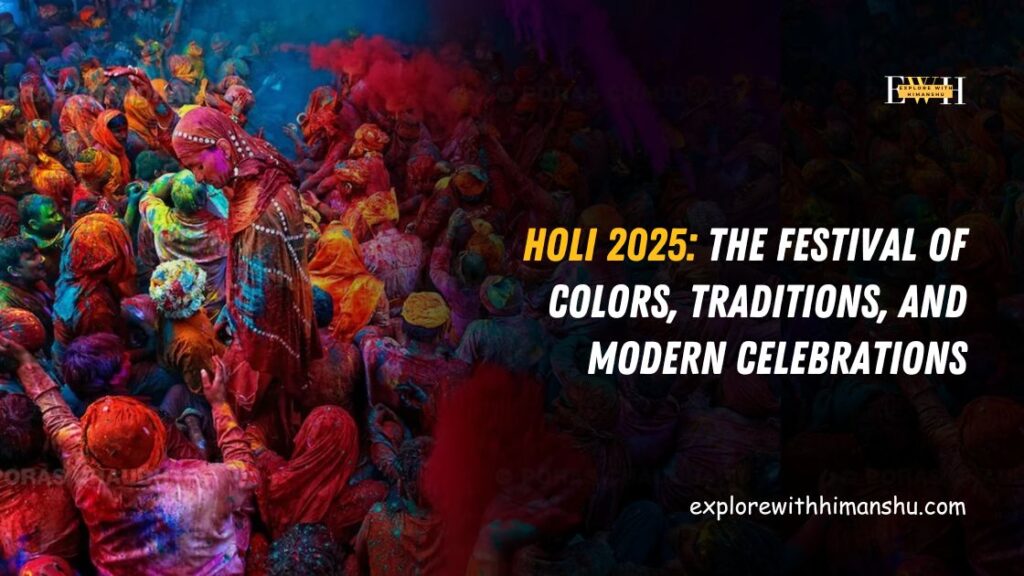Vasant Panchami, one of the most significant Hindu festivals, marks the arrival of spring and is dedicated to Goddess Saraswati, the goddess of wisdom, learning, music, and arts. Celebrated with great enthusiasm across India, the festival is a vibrant mix of cultural traditions, devotion, and joyous festivities. As we approach Vasant Panchami 2025, let’s explore its deeper significance, rituals, and how this festival continues to inspire people across generations.
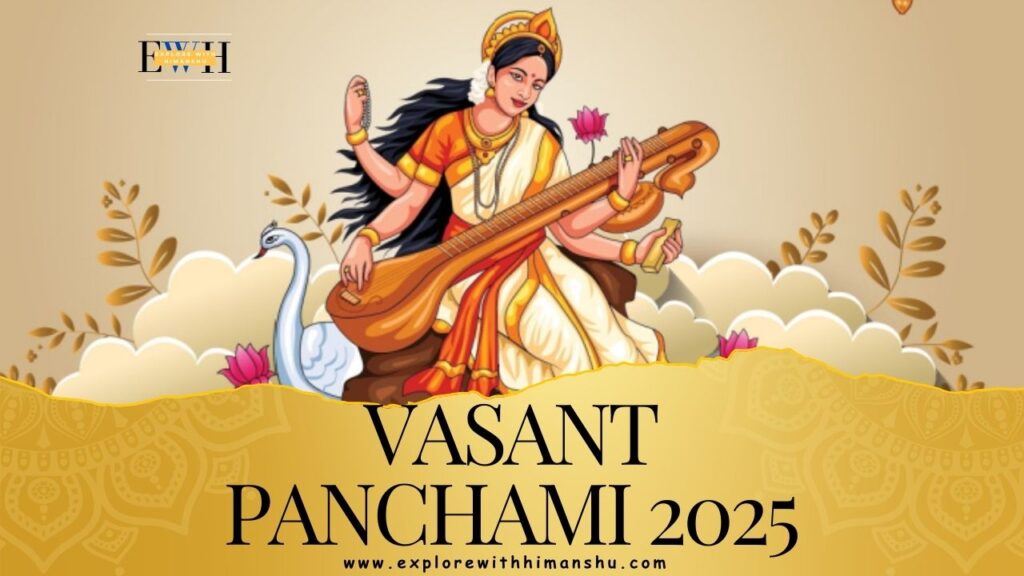
Vasant Panchami 2025 Date and Importance
Vasant Panchami falls on the fifth day (Panchami) of the Hindu month of Magha, which in 2025 will be observed on February 2nd. The festival marks the transition from winter to spring, bringing with it longer, warmer days and the blossoming of nature.
The festival is primarily dedicated to Goddess Saraswati, whose blessings are sought by students, artists, and intellectuals. Schools and educational institutions hold special prayers and rituals to honor her, emphasizing the importance of knowledge and learning in human life.
Why Yellow is the Color of Vasant Panchami?
Yellow dominates Vasant Panchami celebrations as it symbolizes prosperity, wisdom, and the vibrancy of spring. The festival coincides with the blooming of mustard flowers in North India, painting the fields in shades of golden yellow. People wear yellow clothes, prepare traditional yellow-colored sweets, and offer yellow flowers to Goddess Saraswati.
Historical and Mythological Significance of Vasant Panchami
Vasant Panchami has deep roots in Hindu mythology. According to ancient texts, Goddess Saraswati emerged from Lord Brahma’s mouth, adorned in white and holding a veena (musical instrument), symbolizing wisdom, learning, and the arts. Another legend links Vasant Panchami to the love story of Kamadeva (the god of love) and Rati, where Kamadeva was invoked to awaken Lord Shiva from his deep meditation.
The festival also finds mention in ancient scriptures such as the Rigveda, emphasizing the spiritual and seasonal significance of the occasion. In the Mughal era, Vasant Panchami was celebrated in royal courts with music, poetry, and elaborate feasts, showcasing the festival’s cultural inclusivity.
Rituals and Traditions of Vasant Panchami
For a deeper understanding of this festival, check out our previous blog on Vasant Panchami: The Festival of Wisdom, Colors, and New Beginnings for more insights into its cultural and historical significance!
1. Saraswati Puja
Devotees set up idols and images of Goddess Saraswati, offering prayers for wisdom and knowledge. Schools, colleges, and homes conduct special pujas, and students place their books and instruments before the goddess to seek her blessings.
2. Kite Flying
One of the most enjoyable traditions of Vasant Panchami is kite flying, especially in Punjab, Haryana, and Rajasthan. The sky is filled with colorful kites as people engage in friendly competitions, symbolizing joy and freedom.
3. Special Food Preparations
Festivals in India are incomplete without food, and Vasant Panchami is no exception. Traditional dishes such as Kesari Halwa, Sweet Saffron Rice, Boondi Ladoo, and Makki ki Roti with Sarson ka Saag are prepared and enjoyed with family and friends.
4. Wearing Yellow Attire
Men, women, and children dress in yellow outfits as a symbol of positivity and prosperity. Even temples and homes are decorated with yellow flowers and drapes.
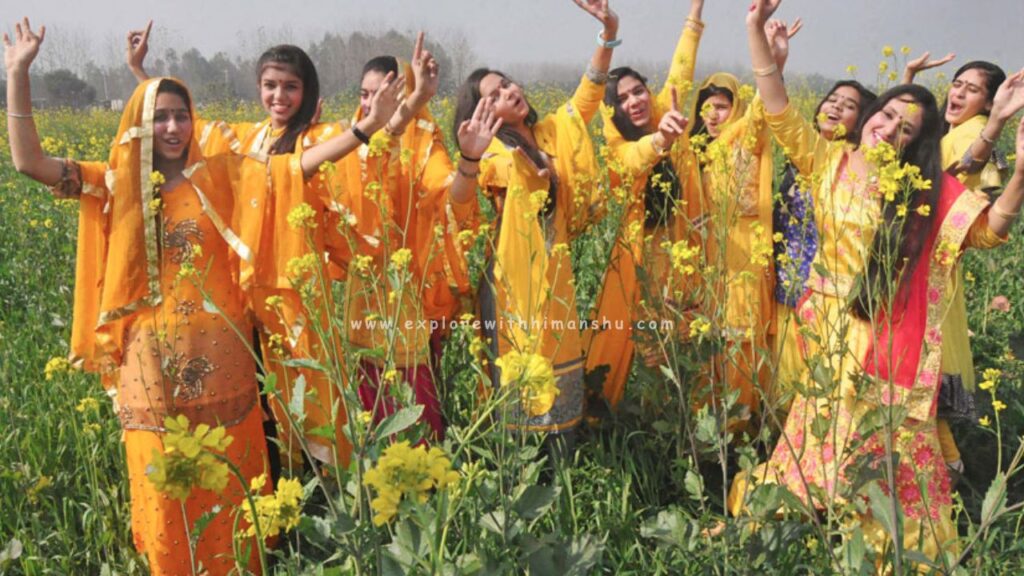
Regional Celebrations of Vasant Panchami
1. West Bengal and Odisha: Saraswati Puja
In West Bengal, Odisha, and Bihar, the festival is celebrated as Saraswati Puja, with grand rituals conducted in temples and educational institutions. Young children are encouraged to write their first letters as a symbolic start to their educational journey.
2. Punjab: A Festival of Kites
In Punjab, the day is celebrated with great enthusiasm through kite flying, music, and community gatherings, marking the onset of harvest season for farmers.
3. Rajasthan and Gujarat: Fairs and Cultural Events
In Rajasthan and Gujarat, grand fairs, cultural programs, and musical performances are organized. Women dress in traditional yellow sarees, and families come together for festive celebrations.
4. Maharashtra and Madhya Pradesh: Social Gatherings
In Maharashtra and Madhya Pradesh, newlyweds visit temples dressed in yellow, seeking blessings for their married life. Community feasts and processions make the festival even more special.
Vasant Panchami’s Influence on Arts and Education
Vasant Panchami is deeply connected to the arts and education. Schools and colleges hold special programs, encouraging students to embrace creativity and wisdom. Many artists, poets, and musicians seek blessings on this day, making it a festival of intellectual and artistic pursuits.
Classical Indian dance forms such as Bharatanatyam, Kathak, and Odissi have performances dedicated to Goddess Saraswati. Temples and cultural centers host special music and dance events, enhancing the spiritual and artistic aura of the festival.
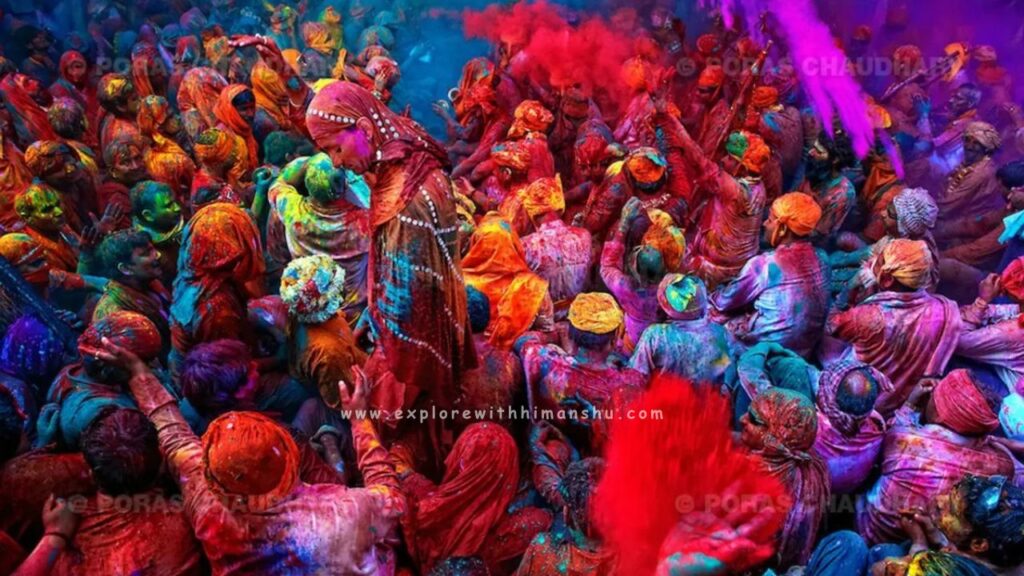
Vasant Panchami and the Onset of Holi Celebrations
Vasant Panchami also marks the beginning of Holi preparations. In some regions, people start playing with Gulal (colored powder) and singing traditional folk songs, setting the stage for the festival of colors.
In Braj (Mathura-Vrindavan), the land of Lord Krishna, temples witness grand celebrations, including devotional music and vibrant festivities.
Modern-Day Celebrations and Significance
With technological advancements and changing lifestyles, Vasant Panchami has evolved beyond traditional celebrations. Many Indian communities worldwide now observe the festival with virtual Saraswati Pujas, online cultural programs, and global knowledge-sharing events. Schools and universities conduct digital prayer sessions, and NRIs celebrate in temples abroad, keeping cultural traditions alive.
Corporate organizations and startups have also begun recognizing Vasant Panchami’s significance. Workplaces organize knowledge seminars, cultural workshops, and meditation sessions to honor wisdom and creativity. Tech firms encourage innovation by holding hackathons and brainstorming events on this auspicious day.
In Bollywood and the entertainment industry, Vasant Panchami is celebrated by launching new artistic projects, music albums, and films dedicated to the goddess of wisdom and arts. Similarly, literature enthusiasts mark the day by reading, writing, and discussing Indian heritage and philosophy.
Social media platforms have given the festival a global reach, with influencers, spiritual leaders, and artists sharing messages, devotional songs, and cultural insights. Hashtags like #VasantPanchami and #SaraswatiPuja trend worldwide, allowing people from different backgrounds to learn about and appreciate this beautiful festival.
Conclusion: Celebrating Knowledge, Spring, and Renewal
Vasant Panchami is more than just a festival; it is a celebration of wisdom, creativity, and the rejuvenation of nature. Whether through worshiping Goddess Saraswati, flying kites, or enjoying delicious festive treats, the day brings people together in a joyous expression of faith and tradition.
As we celebrate Vasant Panchami 2025, let’s embrace new beginnings, knowledge, and the vibrant spirit of spring.
For a deeper understanding of this festival, check out our previous blog on Vasant Panchami: The Festival of Wisdom, Colors, and New Beginnings for more insights into its cultural and historical significance!

